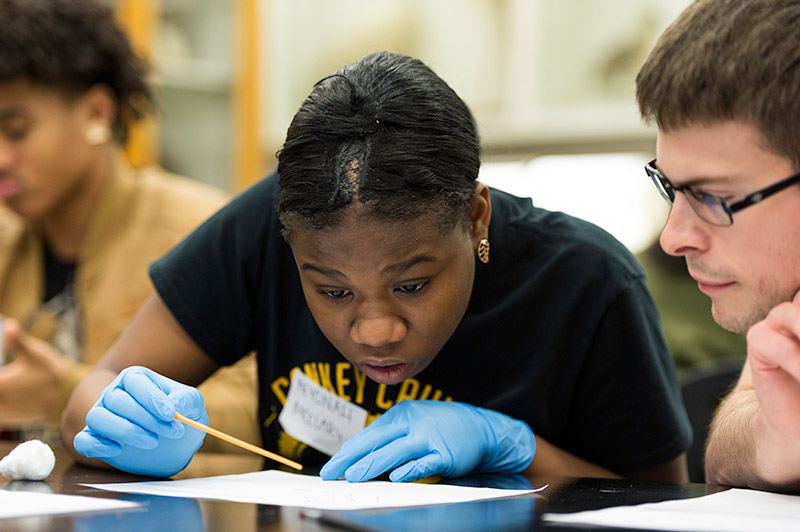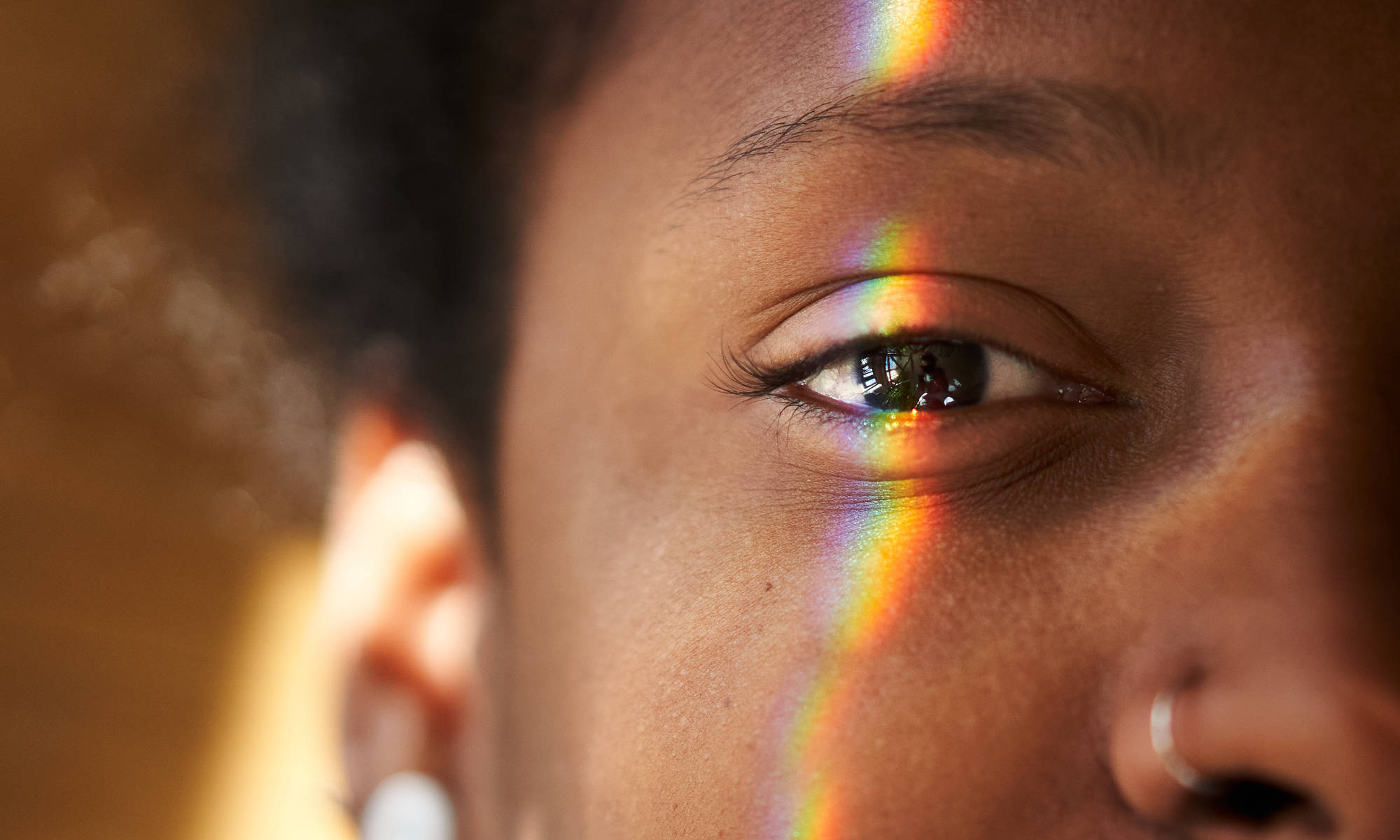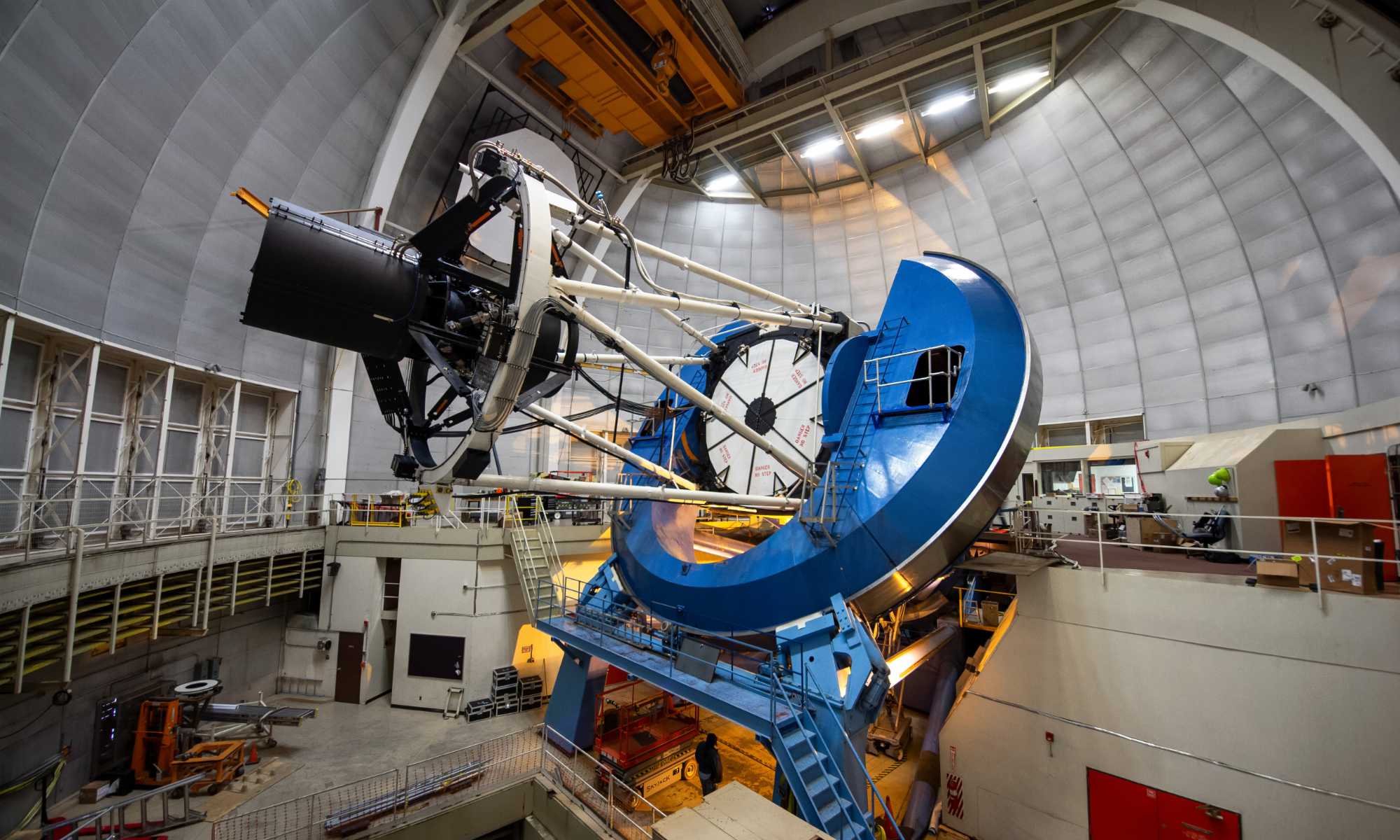Fifteen ninth graders from Rochester’s East High School experienced science at its most exciting – when something startling happened during a fruit fly experiment in a lab at the University of Rochester’s Department of Biology.
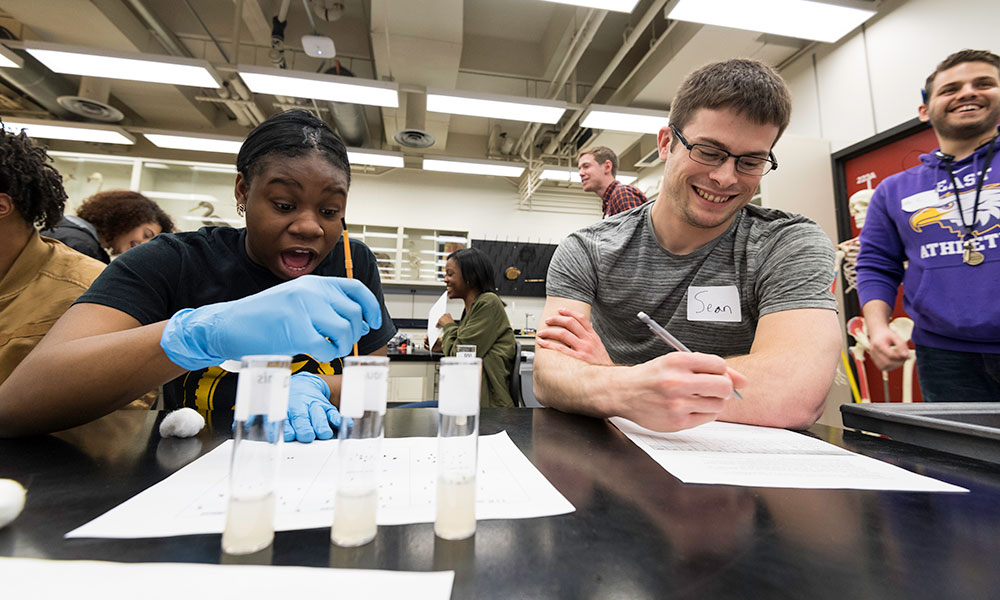
The experiment was designed to show how different fruit fly species have adapted to the unique climates where they are found.
Keyonah McClary, at left in the photo above, worked with Sean Lindley, a lab technician in the Department of Biology, as her East High teacher, Cebrahil Guler-Carrasquillo, looked on.
The goal of the visit by the East High students was to immerse them in science for an entire day, let them experience how classes in college compare to those in their school, and provide an opportunity for University staff and students to learn about them.
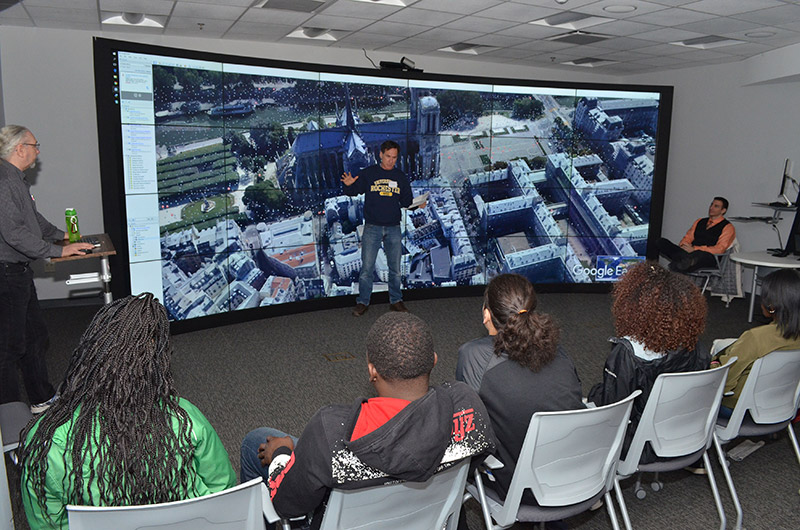
The students first were treated to a “virtual” fruit-fly collecting expedition to Iceland, France, and Uganda, using the high-resolution, 20-by-8-foot screen at the University’s VISTA Collabatory. David Goldfarb, professor of biology, served as the tour guide.
When a breathtaking aerial view of Victoria Falls appeared on the screen, Goldfarb explained how modern humans originated in this region of eastern Africa and then spread throughout the world. However, unlike humans —who are a single species —fruit flies diverged into different species as they colonized and adapted to different climates.
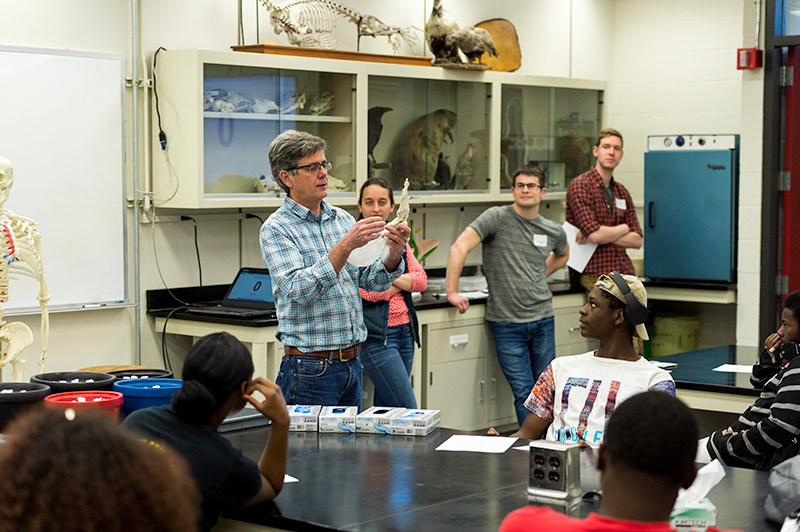
Back at the lab in Hutchison 222, senior lecturer Bob Minckley demonstrated an example of anatomical similarities among different mammals.
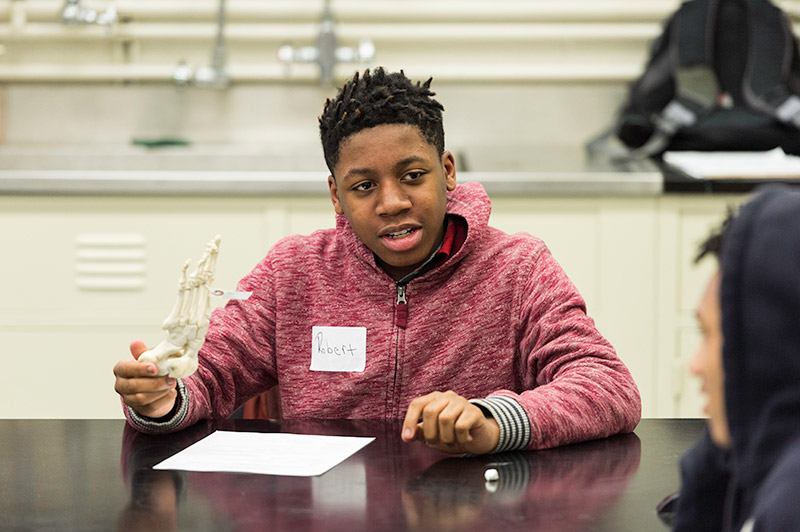
How many bones in a human finger or toe? Minckley asked. Robert Wilson and his East High classmates concur: three to four.
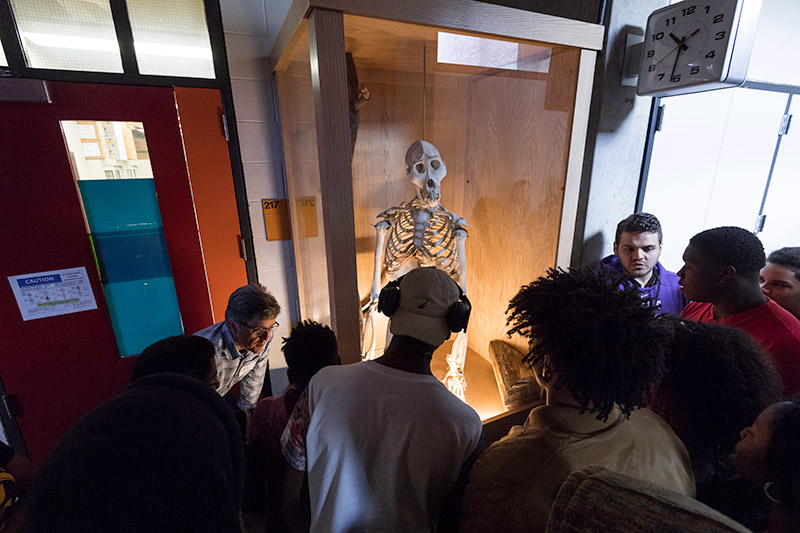
How many bones in a gorilla finger or toe? Also three to four, everyone agrees, after examining a gorilla skeleton in the hallway.
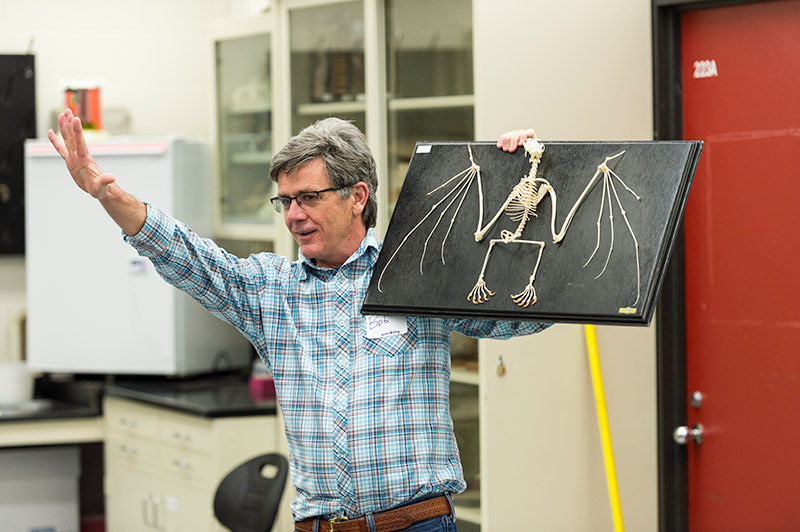
“If I had told you to draw a bat skeleton, would you have known to put the same number of bones in a bat’s finger as are in your own?” Minckley asks back in the lab.
The discovery that different species share similar anatomical features — modified “depending on whether you’re going to use it to climb up trees or walk down a street” — was the “really big deal” in the mid-19th century that inspired Charles Darwin to propose his theory of evolution, Minckley explained.
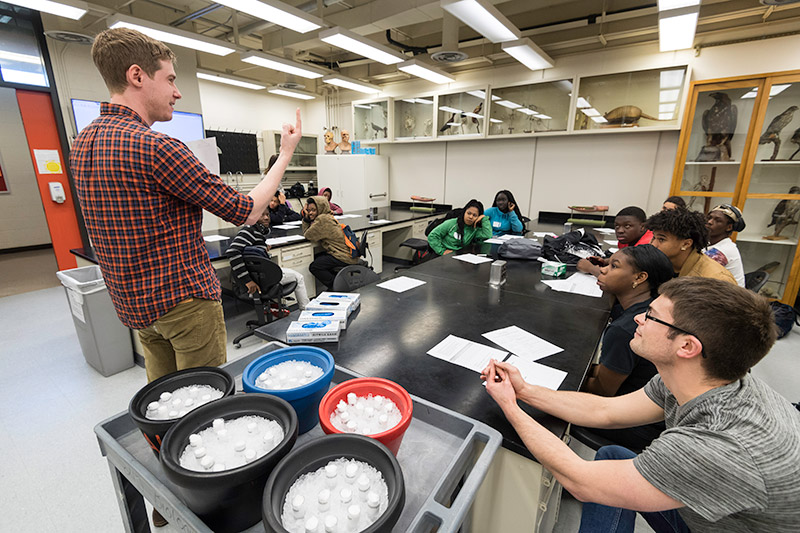
Meanwhile, vials containing fruit flies of five species — originally from latitudes spanning the subarctic to equator — were kept on ice.
PhD student Adam Johnson detailed how the experiment would be done. Students, working in teams of two, would be given one vial of fruit flies at a time, with each vial containing a different species. When given a signal, the teams would empty the flies onto a section of paper set aside for that species, then time how long it takes them to “wake up.”
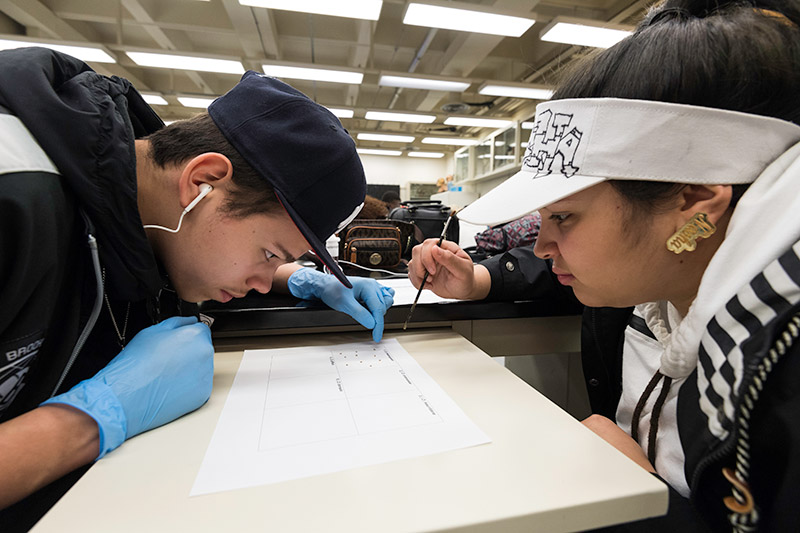
As students Doran Yulfo and Nahsalie Guzman discover, long minutes pass before fruit flies from tropical latitudes begin wiggle, twitch, then flip from their backs to their feet.
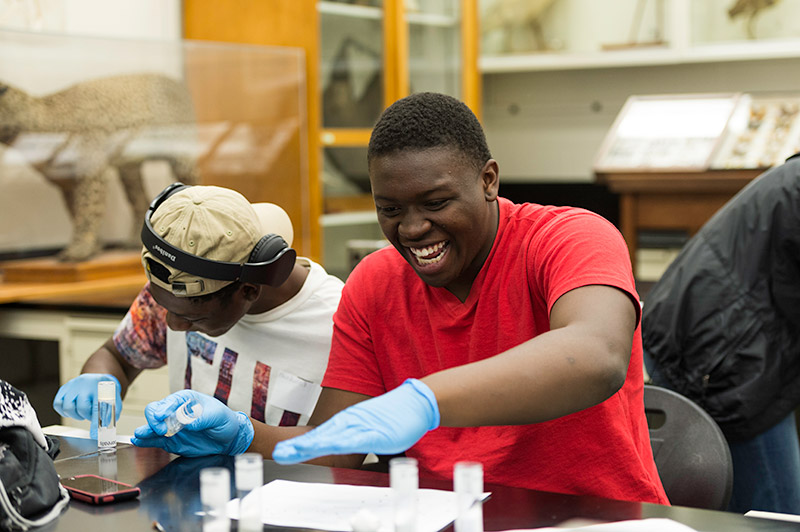
However, moments after the students empty the vials containing Drosophilia borealis — a subarctic species — near pandemonium breaks out. Almost immediately, the tiny fruit flies are moving, even starting to fly, and the students excitedly scramble to keep track.
“I never saw anything like that before,” says student Andre Jenkins, shown above.
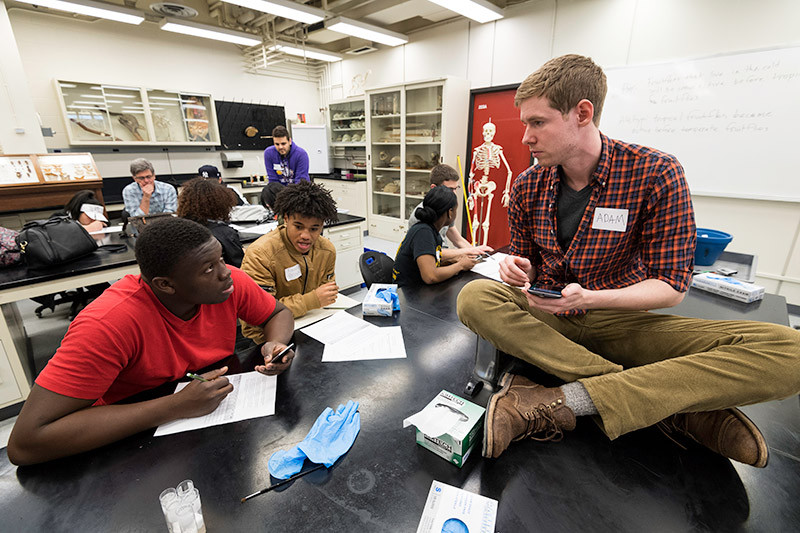
As Minckley notes, “When it gets warm enough in the subarctic, you better get moving, because it’s only warm enough for a short part of the day.”
Johnson, Minckley, Lindley, and senior Hannah Spalding then helped the students compile their data.
This is the fourth year that Rochester City School students have visited the Department of Biology, and the second year in a row students from East High School have made the trip.
This fall, the department will launch a new course to train 14 undergraduate seniors in hands-on labs they can take to East High.
The ultimate goal is to interest East High students in attending college — in the hope that some will pursue careers in STEM (science, technology, engineering, and math) fields.
“We’re hoping some of these kids will go on to research institutions and thrive,” Goldfarb says. “If we can provide them with the resources, and make them feel welcome, maybe they will say ‘I can do this.’”
